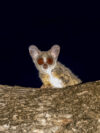Antelope Monitoring in Luambe National Park
Time Frame: Since June 2024
Partners: German Society for Mammalian Biology
Geographical Range: Luambe National Park
Project Lead: Dr. Vera Rduch, Tom Riffel
Objectives:
- Assess population dynamics: Determine the density of antelope populations in Luambe National Park and track changes across seasons and years.
- Examine population structure and condition: Study age and sex composition, body condition, and behavioural patterns of the different antelope species.
- Understand habitat use: Identify habitat preferences of antelopes within the park and evaluate how these may shift with seasonal changes

The Luangwa Valley, in eastern Zambia, is one of Africa’s most important wilderness areas, renowned for its rich wildlife and the dynamic Luangwa River. Within this landscape lies Luambe National Park, one of the smallest of Zambia’s national parks at just 350 km². Despite its size, Luambe plays a crucial role in the wider Luangwa ecosystem with its location between North Luangwa National Park and South Luangwa National Park as well as connecting to Lukusuzi National Park in the east.
The park encompasses diverse habitats, including riverine forests, mopane and miombo woodlands, and open grasslands. Among its key inhabitants are the antelopes, which act as indicators of ecosystem health and provide essential prey for large predators.
Antelope Diversity in Luambe
Luambe National Park is home to 13 antelope species: Impala, Puku, Cookson’s Wildebeest, Bushbuck, Common Waterbuck, Common Eland, Oribi, Southern Reedbuck, Sharpe’s Grysbok, Common Duiker, Roan, Lichtenstein’s Hartebeest, and Greater Kudu.
Survey Methods
To monitor these populations, we conduct road surveys along 10 line transects, each only a few kilometres long. Surveys are carried out at four times of day at 7:00 am, 8:30 am, 3:30 pm, and 5:00 pm and are restricted to the dry season (between June and October). Data is analysed using standard distance sampling techniques alongside additional statistical approaches to estimate population density and distribution. Since 2025, we are also monitoring elephant numbers in addition to antelopes.
Why This Matters
This project seeks to study the status, structure, condition, behaviour, and habitat use of antelope populations in Luambe National Park. The knowledge gained will be vital for understanding ecosystem processes, assessing the impact of recent conservation efforts, and guiding future management.
The Cookson’s Wildebeest, an endemic sub-species of the Blue Wildebeest, is the largest wildebeest subspecies, restricted to the Luangwa Valley.
Photo: Martin Johansen Photography

Monitoring and understanding how populations of antelopes and elephants change in Luambe National Park, is an essential factor to understand if conservation works. Growing trends may mirror and intact ecosystem while the opposite will alert us and partners that something is not right, allowing us to respond quickly with adequate follow-up studies to understand the underlying drivers. As with all our project, we share our findings widely with the Department of National Parks and Wildlife as well as with collaborating conservation partners.


